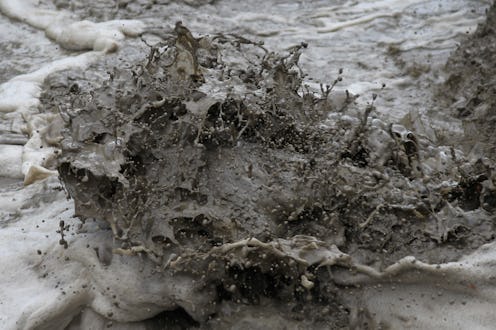News
An El Niño Is On Its Way, But What Exactly Is It?
Though it may mean "little boy," climate scientists are warning that this year's El Niño will have nothing little about it. Due to the abnormally warm subsurface ocean conditions currently occurring in the "Nino 3.4" region, an area of the tropical Pacific Ocean south of Hawaii, forecasters are predicting that the an El Niño in 2014 will cause some serious extreme weather headaches. But what exactly is an El Niño?
Well, the phenomenon was first noted by fishermen exploring the waters of Ecuador and Peru. They found that a warm ocean current always appeared around Christmas, and continued to disrupt the abundance of fish for several months. Since the its discovery, scientists have studied this warm current and its effects on weather patterns, which are often as bizarre as they are severe. Though they do not occur every year, when they do appear, we should sit up and pay attention.
This year, the major worry lies in the fact that there seems to be a lot of increasingly warm water loitering around the surface of the Pacific Ocean. The Australian Government's Bureau of Meteorology shows steadily warming water temperatures in the past three months, with projects for April propelling these high temperatures upwards (closer to the surface) and eastwards. An April 4 map of ocean temperatures further corroborates the story of warm water emerging on the ocean's surface.
As these oceanic temperatures continue to rise, global temperatures will follow suit, which may lead to 2014 being named the hottest year on record. El Niño, together with its equal-but-opposite cycle La Nina, form the "biggest source of year-to-year climate variability." In fact, four of the five warmest years reported were years that saw an El Niño.
Now that the tropical Pacific Ocean is warming and continues to warm, NOAA’s Climate Prediction Center and Columbia University’s International Research Institute for Climate and Society are suggesting that these temperatures will create enough energy to warm the rest of the world as well.
Scientists certainly have cause to worry, as this year's El Niño conditions may be comparable to those recorded in 1997 - 1998, which to date, is the biggest known El Niño. The damages attributed to those storms and weather anomalies caused an estimated $35 billion in damage and 23,000 deaths across the globe. The last El Niño event was in 2010, and given that these ocean temperature patterns recur every two to seven years, 2014 might have the makings of the perfect storm. AccuWeather Long Range Forecaster Mark Paquette went so far as to say,
We are confident that an El Niño is in the early stages of developing and may reach moderate strength moving forward into mid- to late summer of 2014.
Though some global warming skeptics erroneously claimed that climate change had "stopped" after the last major El Niño in 1998 — it's unclear why anyone thought this was true, considering that the ten hottest years on record have all occurred since 1998 — the scientific community has often posited that the Pacific Ocean has been storing much of the energy associated with increasing temperatures underneath the surface of the ocean.
This would explain why temperatures have been increasing at a slower rate than they were at the beginning of the 20th century, after the Industrial Revolution sent worldwide thermometers on an unprecedented spike.
If true, this could bode very poorly for this year's El Niño, which could see the reemergence of all these warm temperatures in one sharp burst, not only reinstating the rapid rise of global temperatures, but also drastically affecting other weather conditions.
These effects include a lengthening drought in Indonesia, more bush fires in Australia, fishing shortages in Peru, and a truncated monsoon season in India. This could also lead to indirect effects, like the decline in sales of insecticides in India, in anticipation of a poor crop season. In fact, the Indian government is accusing the United States' scientific community for "spreading rumors" about the severity of this year's El Niño. Many of these issues could lead to food shortages, exacerbating an already serious problem.
While Californians may, on the other hand, rejoice at the potential downpour of rain El Niño could bring, a celebration might be premature, as often extreme conditions could lead to massive flooding or mudslides. Though El Niño itself may be predicted, its effects remain in flux, and it seems that we have something to fear.
